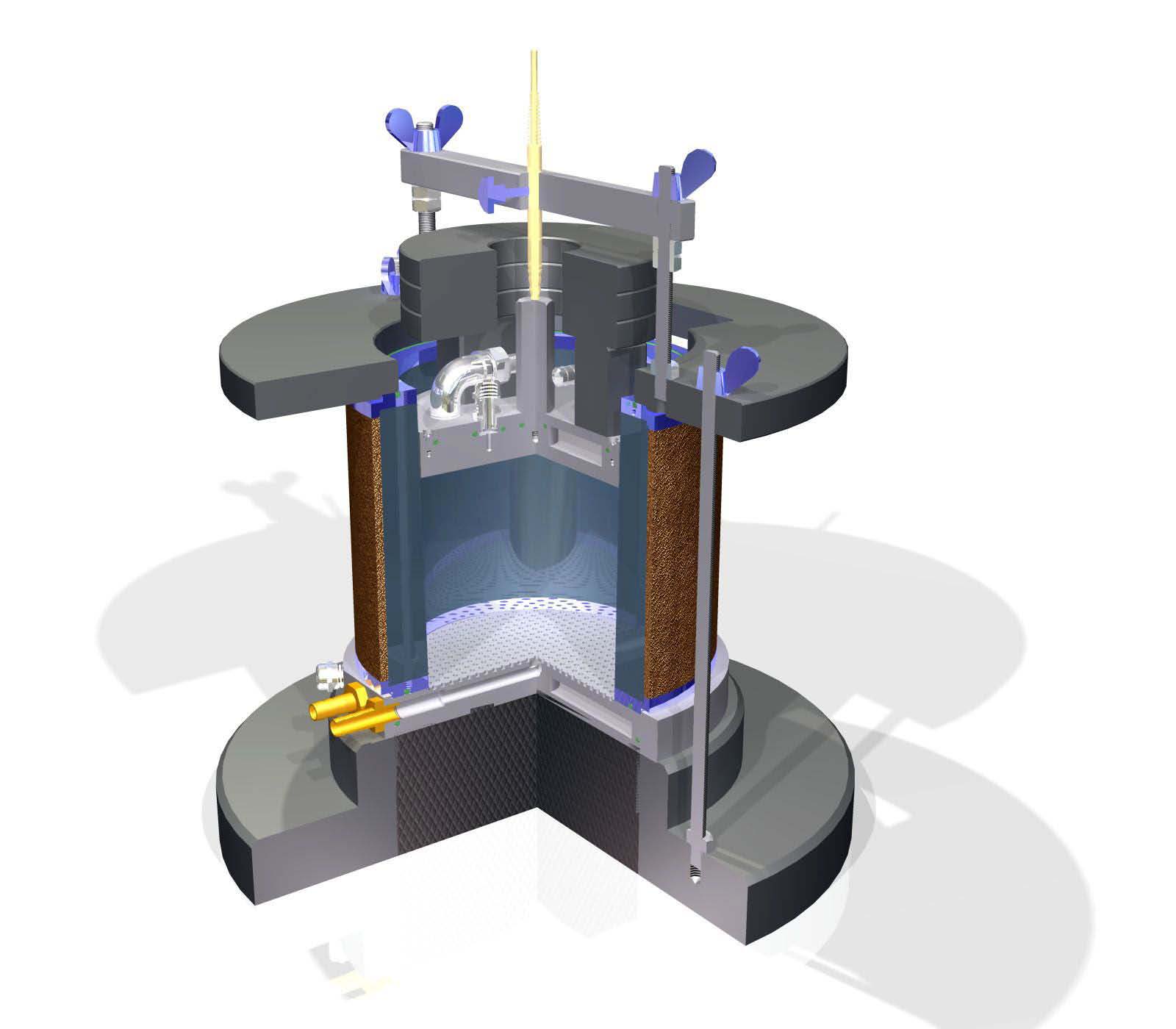Manufactured By: Schleibinger Gerate
According To The CBR-F Test Swiss Standard SN 670 321a (2001).
According to the Swiss standard SN 670 321a the chamber is suitable for soil specimens with a maximum aggregate size of 16mm.
There are two cooling plates on top and the bottom size of the specimen. With a high precision LVDT the height change of the specimen during freezing and thawing is measured.
The test combines two test methods:
The height change test
The strength weakening during the thawing process.
The test is easy to handle and is finished in 5 days. The specimen has an optimal water content, determined by the Proctor test.
The vessel is made of a thermal insulating material. The expansion is measured by a high precision LVDT gauge.
Also temperatures on the bottom and on the top of the specimen is recorded.
Its recommended to make several tests to determine the influence of the water content in the CBRF value. For example 3 different water contents may be applied.
Test Procedure
Preparing of the specimen:
The dry mass of the specimen should be about 45 kg. Use fresh material for the compaction curve, the expansion curve and for the CBRF test. The maximum aggregate size is 16mm. Larger aggregates must be removed. Determine the optimal water content in the epoxy vessel supplied with the test apparatus.
Additional Product Information:
| Item | Size | Download |
|---|---|---|
| Product Brochure | 325kb | Download |
| Product Specifications | 254kb | Download |
To download and view these attachments you must have Acrobat Reader. If you do not have Acrobat Reader, click the “Get Adobe Reader” button.

